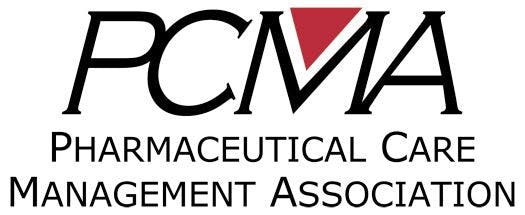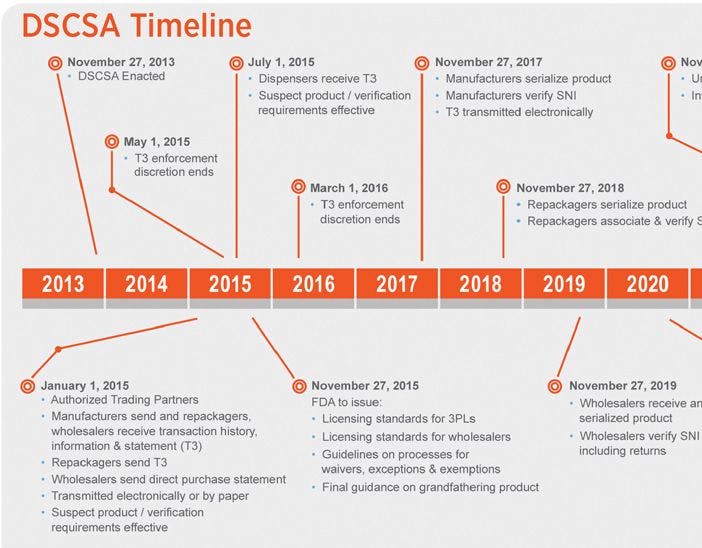Specialty pharmacy dynamics
The SP channel continues to grow, with manufacturers looking for more control over access
As the specialty pharmaceutical marketplace grows, so does the specialty pharmacy provider (SPP) market. And with the former growing at double-digit rates, while traditional retail pharmacy is growing in low single digits, the attraction is obvious.
“In 2015, the FDA tied the record for the most novel new drug approvals since the creation of the Prescription Drug User Fee Act in 1992,” notes Philip Hagerman, RPh, CEO of Diplomat Pharmacy (Flint, MI). “The exceptional growth in new treatment options keeps arriving, bringing hope for patient populations who’ve never had it. These robust pipeline demands call for the very foundation we are built upon—dedication to our patients and a flexible and nimble infrastructure that optimizes therapy management.”
Diplomat is the largest independent SP in the US, competing against the SPs operated by the bigger pharmacy benefit managers (PBMs) and the chain pharmacies, such as Express Scripts, CVS Health and Walgreens. AmerisourceBergen, through the AmerisourceBergen Specialty Group, has several business units that provide SP and specialty distribution services; Cardinal Health, McKesson and H.D. Smith, rounding out the top four US wholesalers, each has its own specialty unit with SP services included. But hundreds of other pharmacies, or pharmacy operations of larger companies, have entered the fray; URAC, one of the organizations that provides accreditation for SPs, says that it will have accredited nearly 400 companies by the end of this year—a near tripling from just 2013.
Additionally, there is considerable realigning of SP organizations, who are being snapped up by larger companies or merged; a couple of the recent, bigger acquisitions were Salveo Pharmacy, now part of UnitedHealth, an insurer that also now owns Catamaran, a major PBM; McKesson Specialty Solutions’ acquisition of Biologics, an oncology SP; part of Diplomat’s recent growth has been fueled by the acquisition of Burmans Pharmacy, a regional firm in the Middle Atlantic. Even food stores are getting into the act: Giant Eagle acquired Rx21 Specialty Pharmacy for an undisclosed price, with the intention of participating more broadly in the hepatitis C therapy area.
The biggest recent deal is CVS Health’s acquisition of Omnicare a year ago, which has both SP and distribution businesses, for $12.7 billion. While the bulk of that price (and the bulk of Omnicare’s business) is in serving the long-term care market, it included the Omnicare Specialty Care Group, which itself had multiple SPs. Of particular interest to pharma marketers is the RxCrossroads unit, which combines an SP, a third-party logistics service, patient support hub services, and field services for patient and healthcare-provider support.
CVS Health, as noted, is already a large player in the SP field; for now, the RxCrossroads part of the acquisition is being managed as a separate entity. “CVS Health's acquisition this past August of the Omnicare businesses, both the Long Term Care and RxCrossroads, provides some unique opportunities,” Rocky Kraft, SVP at Omnicare, tells Pharmaceutical Commerce. “We are in the midst of an analysis across the CVS Health enterprises to enhance current operations and grow innovative solutions for connecting patients to their therapies, furthering CVS's mission helping people on their path to better health.”
Meanwhile Denise Von Dohren, VP of access solutions at RxCrossroads, says that the company has been busier than ever with managing patient support programs for manufacturers. “Our emphasis is on customizing solutions for a wide variety of therapy programs, ranging from a ‘specialty lite’ service for handling prior authorizations for patients, to highly specialized program for, for example, the disabled or elderly.” She cites the utility of the organization’s network of 450 field nurses to help patients with administering self-injectable drugs, and the resources to provide education for HCPs.
National SPs and national distributors have a simple proposition for manufacturers: national coverage is guaranteed. But the hundreds of local or regional pharmacies, plus, to a growing degree, hospital systems want their share of the specialty pharmaceutical market. (For hospitals, some of the distribution arrangements can be handled by the group purchasing organizations of which they are members, but generally speaking, GPOs don’t provide dedicated patient-support services).
click to enlarge

Fig. 1. Accenture’s analysis of current and future industry-sponsored patient services. Credit: Accenture[/caption]
Follow the money
A not-very-straightforward process is entailed in payments to SPs and reimbursements to manufacturers, in specialty pharmaceutical distribution. Manufacturers can choose conventional distribution; distribution through a specialty distributor; direct distribution to major SPs; and exclusive, limited or expansive networks of SPs selected for a drug. Layered into this is the practice of “buy and bill,” common to oncology and other specialties, which enable physicians (or their employers) to be reimbursed for dispensing a drug, often under a medical benefit rather than the typical pharmaceutical benefit of insurers. “White bagging,” covered later in this article, further clouds the distribution process.
Once pricing has been established, however, another layer of competition around patient services ensues. Manufacturers want to ensure the success of a drug’s commercialization, and with many specialty drugs, that can involve coordinating care between pharmacies and healthcare providers or outpatient clinics; assisting patients through the benefits verification process and a growing number of additional services (see Fig. 1). Manufacturers need to weigh the costs of the distribution channel against the quality of patient service provided. Hub service providers—generally, third parties reimbursed by manufacturers to provide much of this coordination—represent another option for the specialty drug.
Accenture, the IT consultancy, has been conducting a survey within healthcare for the past three years on the topic of patient-industry interaction; the latest, just-released study* was a poll of pharma marketing executives in the US and Europe of their patient-services investments. More than 85% of pharmaceutical executives plan to ramp-up their investment in patient services over the next 18 months. And 91% expect to offer six or more types of patient services in the next two years, focusing on key areas like medication delivery, treatment adherence and remote monitoring (Fig. 1).
Fig. 2. Accenture’s survey of industry communication efforts.

At the same time, though, Accenture found in a 2015 study of 10,000 patients in various countries in the US, Europe and South America, that only around one in five patients was aware of the services currently available, pointing to a lack of communication between healthcare systems generally and the public. Anthony Romito, one of the study authors, notes that this interactivity can include “pretreatment” information—educating the public, for example, on the warning signs for certain disease conditions, through nonpromotional information.
How to communicate? The Accenture study respondents rely most heavily on healthcare professionals (doctors, nurses) or the institutions they belong to (hospitals, clinics) (Fig. 2). Pharmacies and pharmacists figure in this process as well, representing 29% of the channels used. Sales rep visits with pharmacists, marketing programs to pharmacists and external patient services organizations (such as hub providers) are three of the most common communication channels.
The survey is not specific to specialty pharmaceuticals (rather it is based on several general therapeutic areas), but specialty products clearly are within the scope of the study. Overall, says Romito, the pharma industry needs to approach the patient communications task more directly, recommending:
- Patient services will become a competitive driver and no longer optional for pharma companies
- Investment should be led by what patients value, but measuring business value is critical to sustainability
- Clear organizational and operational strategy must be in place to ensure companies are structured for success
- Articulating the patient and economic value of services needs to be central to healthcare professional interactions
Networked service
Into this vacuum, several organizations have arisen to fill the gap. The longest-operating one is arguably Armada Health Solutions, which recently changed its name to Asembia. Calling itself “a specialty group contracting and service organization,” it manages purchasing agreements for SPs, prescription data management services and patient-support programs. “Under the new Asembia name, we will continue to expand on our company's tradition of providing our partners with valuable solutions ranging from high-touch patient support hub services, innovative technology platforms and collaborative contracting strategies for specialty pharmaceutical products,” said Lawrence Irene, RPh, CEO, in a statement. While Asembia is coy about just how many SPs or other providers are in its network, it also runs a wildly popular specialty pharmacy summit every year in Las Vegas, NV; the meeting (at presstime) was scheduled for May 2–6, and more than 2,000 attendees were expected.
Another organization has been in business for several years serving the hospital pharmacy sector: ExceleraRx Corp., based in Minneapolis, MN. It currently has 17 member health systems and academic medical centers. For members, it offers a means to retain more revenue, which it calculates is lost to the tune of $15 million per million lives served by the health system.
For manufacturers, it suggests that “while individual health systems provide the point-of-care advantage, pooling their expertise is a more efficient way to improve outcomes,” according to a company statement. “Through its combination of centralized management and localized patient care, the sophisticated Excelera organization meets and exceeds manufacturers’ specifications and expectations.”
Hospital outreach
Diplomat Pharmacy, for one, is not letting the hospital market fall away as a source of clients. “Diplomat partners with retail and hospital pharmacies across the country in our Retail Specialty Network and our Hospital Specialty Program,” says Atheer Kaddis, PharmD, EVP at the company. “We provide all of the administrative support for the dispensing of specialty medications in the retail and hospital outpatient settings.” The goal, he says, is to “to provide a patient-centric program whereby they have the ability to purchase a product, maintain critical services to their patients and become more relevant in the specialty space, with Diplomat partnering to provide the necessary back-end services.”
The newest entry into this networking field is KloudScript (Oakbrook Terrace, IL), founded by Rinku Patel, PharmD. Its goal is to bring local and mostly independent pharmacies into the specialty fold, banking on the close relationships that local pharmacists have with their clientele to provide SP-level services.
She says that the organization has a membership (who pay fees to KloudScript) of 400, covering 40 states, with a goal of reaching all 50 by year-end. And it is working with the Center for Pharmacy Practice Accreditation (CPPA), one of the national accrediting bodies, to develop an accreditation process for its member pharmacies.
White bagging
Traditionally, oncologists and other specialists have purchased directly from specialty distributors (SD) and GPOs. Once the drugs are administered to patients, the physicians bill the patient’s insurance plan (typically under the patient’s medical benefit, since the medications are infused in the clinical setting) and accept the reimbursement for the drug itself, plus administration fees, and associated laboratory work and office visits, as payment. Thus, the “buy and bill” model. Now, however, the relentless pressure to control costs is leading to the growth of “white bagging.” Some stakeholders welcome this change, others do not.
Using a white bagging approach, the physician’s office orders drugs on a patient-by-patient basis, rather than keeping them in stock. The ordered drugs are then obtained from an SP, and the drug inventory is stored at the physician’s office until the patient arrives for infusion or treatment. Under the white bagging model, physicians are paid for administering the therapy, but since they no longer purchase and maintain inventories of specialty medications on-site, they are no longer reimbursed directly for the drugs. Rather, the SP then bills the patient’s insurance plan (typically under the pharmacy benefit) and receives the reimbursement payment for the medications, and the patient is billed for any additional out-of-pocket copayment or co-insurance requirement.
Proponents of this newer practice say that it can help to remove some costs from the healthcare system, by streamlining the supply chain and removing some of the price markups that are routinely passed through when physicians use the buy-and-bill practice (these profit margins—typically equal to the acquisition cost plus a fixed percentage—have long been an important, approved source of revenue for oncology practices).
Different stakeholders have different and, at times, conflicting objectives in their use of white bagging,” says Deni Deasy Boekell, senior director, commercial strategies, Kantar Health. In general, larger practices tend to prefer buy-and-bill, because it leads to more revenue, and they have the clinical staff to manage the administrative hassles. Smaller practices tend to favor the white bagging approach, because it helps to outsource some of the financial risk and carrying costs, and reduce some of the logistical and administrative challenges associated with managing a full drug inventory on-site, seeking reimbursements and collecting any co-payment obligations from patients (which are common with the buy-and-bill approach).
Consequences
However, white bagging also reduces operational flexibility and increases administrative complexity for the practice, especially when the physician may want to change medications or adjust the dosing based on the patient’s ongoing experience with the proposed treatment regimen.
White bagging creates both upsides and downsides for specialist practices. “They win when they are able to selectively use SPs for unfavorably reimbursed or rare drugs, and use SP services for reimbursement and other administrative tasks,” says Deasy Boekell. “But they lose when they are cut out of the traditional buy-and-bill margins on potentially profitable drugs, and sometimes, integrating the SP dispensing into the workflow can bring new administrative hassles.”
Meanwhile, pressure from payers who are pushing white bagging is not welcomed by many practices, since “it cuts providers out of the profits they have historically relied on from buy-and-bill, and often results in additional administrative burdens for practices—in terms of requiring different payer-mandated SP dispensing requirements to be integrated into the practice workflow, on a patient-by-patient basis,” says Deasy Boekell. “And in many cases, the payer-mandated SPs may not be the practice-preferred SP.”
White bagging can also be more expensive for patients, since there can be higher out-of-pocket costs for a drug dispensed under a medical rather than pharmaceutical benefit; the difference depends on payer policies. White bagging also allows payers to negotiate more favorable dispensing rates with SPs than would be possible through buy and bill. “Not surprisingly, in 2016 we see payers pushing white bagging more aggressively,” says Deasy Boekell of Kantar Health. In some cases, payers may either mandate the use of the practice, while in other cases, they may seek to encourage or incentivize it through less-favorable reimbursement structures.
Incentives
In a recent Kantar Health Payer Survey, the percentage of payers encouraging the use of specialty pharmacies to manage physician-administered injectable cancer agents through white bagging—by, for example, decreasing buy-and-bill reimbursements for certain drugs—grew from 29% in 2014 to 36% in 2016. The percentage of payers mandating the use of specialty pharmacies on certain drugs remained steady at 24% from 2014 to 2016. According to the study, payers are more likely to incentivize the purchase of physician-administered IV cancer drugs through SPs, by creating favorable reimbursement policy (36% of payers), rather than mandating the use of white bagging (24% of payers); only about a quarter of payers are not actively influencing the channel at all.
And some industry observers worry that this change in oncology practice economics and diminished profit margins may also overtly or covertly influence the physician’s choice of therapy options at the point of care. This has potential implications for both patients and drug manufacturers.
When it comes to the disposition of extremely expensive specialty medications (especially biologic therapies), “drug manufacturers want to know where their drugs are at all times, so in some cases, the ability to align themselves with specialty pharmacies and use a white bagging approach brings strategic advantages in terms of better visibility and control,” says Dana Evans, MD, medical affairs payer support for Genentech [Editorial note: Remarks by Evans do not necessarily reflect the viewpoints of Genentech].
“The SP market is fairly fragmented but has been consolidating, and the leaders are competing strongly to grow their business; white bagging offers them an opportunity to do so,” says Deasy Boekell of Kantar Health. “Today, SPs work to offer services that make them more attractive to the practices, vying to become their preferred SP and to make payer-driven white bagging more palatable.”

















